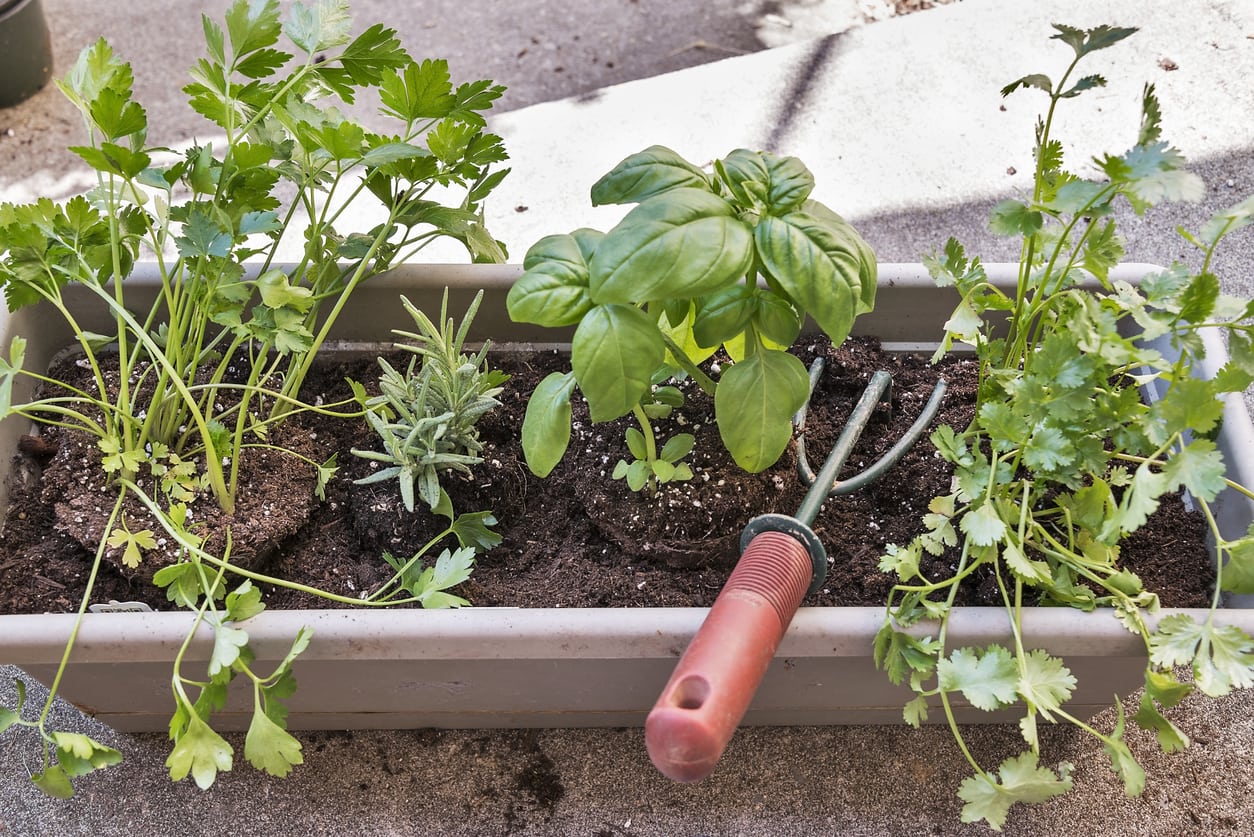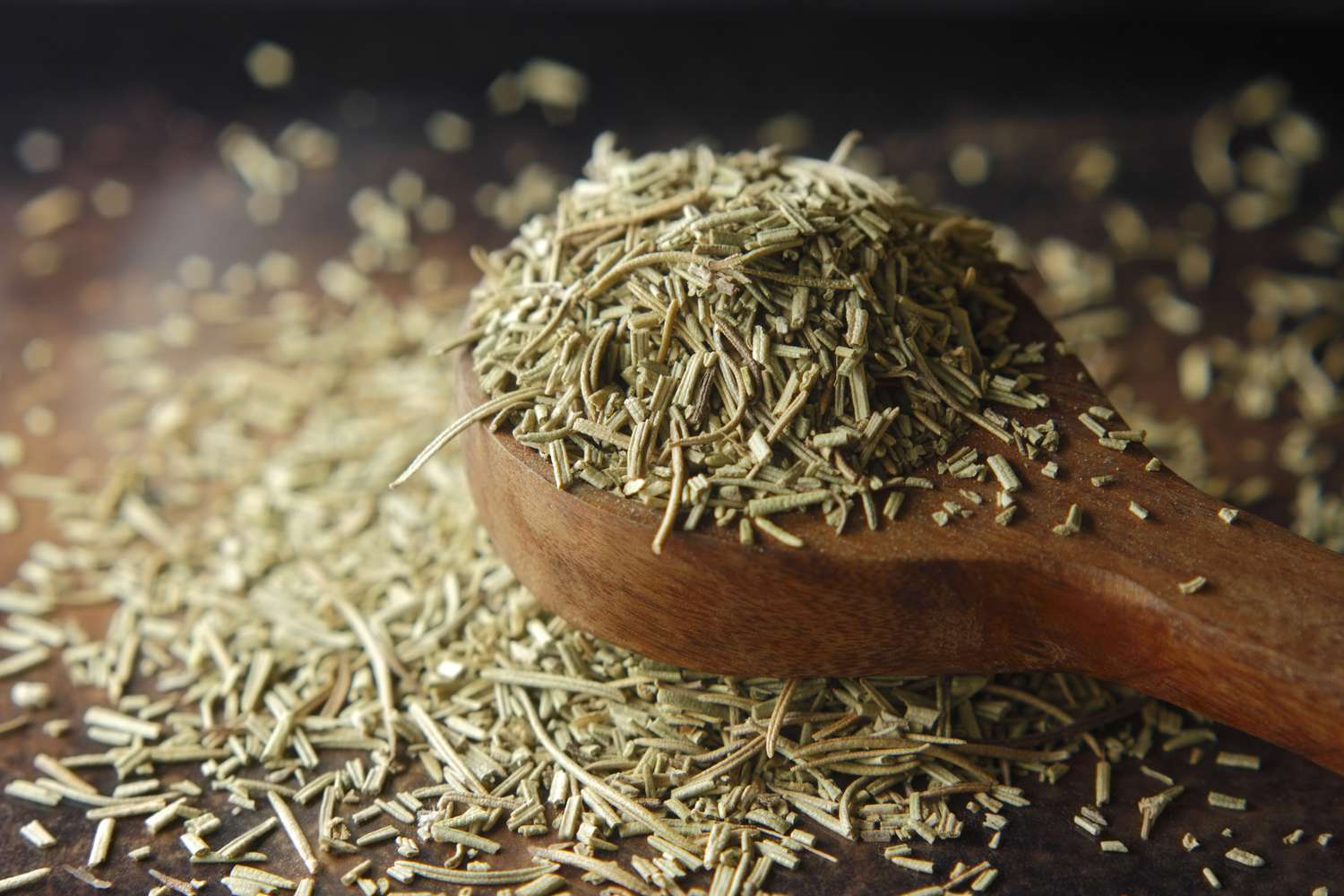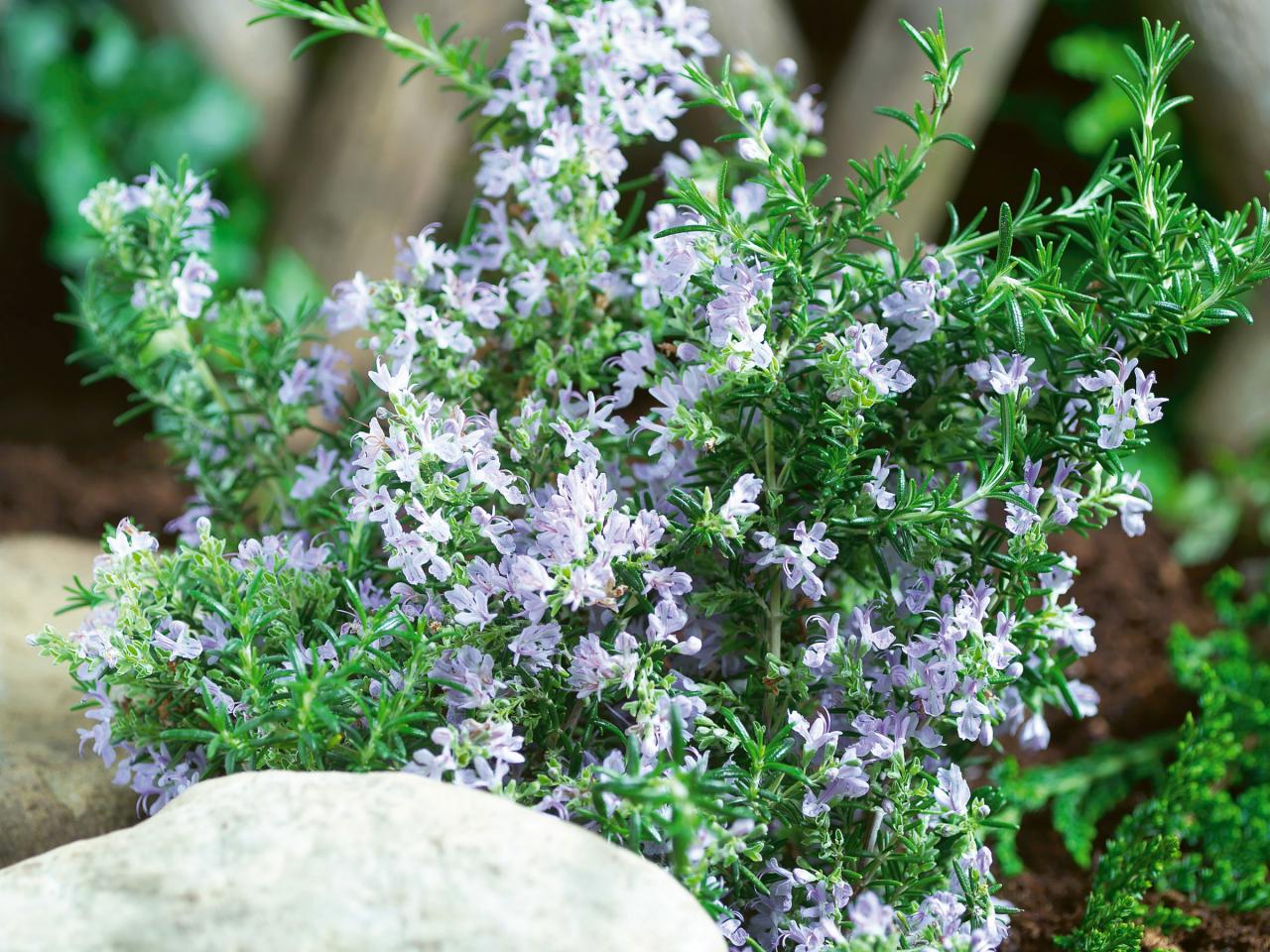Home>Gardening News and Trends>Latest News>What Is Rosemary Bread


Latest News
What Is Rosemary Bread
Published: January 31, 2024
Get the latest news on what is rosemary bread, including recipes, tips and techniques for making this fragrant and delicious bread at home.
(Many of the links in this article redirect to a specific reviewed product. Your purchase of these products through affiliate links helps to generate commission for Chicagolandgardening.com, at no extra cost. Learn more)
Table of Contents
Introduction
There’s nothing quite like the aroma of freshly baked bread wafting through the air, enticing us with its comforting and mouthwatering allure. One variety that stands out among the many types of bread is rosemary bread. The combination of the fragrant herb and warm, crusty bread is a match made in culinary heaven.
Rosemary bread is a classic Italian bread that has gained popularity worldwide for its distinctive flavor and versatility. It is known for its slightly sweet, earthy taste and delicate hints of pine. The addition of rosemary not only enhances the aroma but also adds a unique twist to the traditional bread recipe.
With its origins dating back centuries, rosemary bread has a rich and fascinating history. It has been a staple in Mediterranean cuisine, especially in Italy, where the herb is abundantly grown. Over time, it has evolved from a simple loaf to a beloved artisanal bread, often found in bakeries and enjoyed in households around the globe.
The secret to the deliciousness of rosemary bread lies in its carefully selected ingredients. Basic variations of the bread typically include flour, water, yeast, salt, olive oil, and of course, fresh rosemary. This combination creates a hearty dough that is both chewy and soft on the inside, with a crisp crust on the outside.
Preparing rosemary bread requires a few essential steps, such as mixing the dough, proofing it to allow the yeast to work its magic, and shaping it into a loaf. The bread is then baked to golden perfection, filling the kitchen with an irresistible aroma that will leave you eagerly anticipating the first bite.
Once baked, rosemary bread can be enjoyed in various ways. Its versatility allows it to be paired with a wide range of dishes, from soups and stews to salads and sandwiches. The herbaceous flavors of rosemary pair exceptionally well with roasted meats, cheeses, and even fruity spreads, making it a crowd-pleasing choice for any occasion.
In addition to its delicious taste, rosemary bread also offers several health benefits. Rosemary is packed with antioxidants and has been linked to improved digestion, enhanced memory, and reduced inflammation. Incorporating rosemary bread into your diet is a flavorful way to reap these benefits.
As with any traditional recipe, there are also variations of rosemary bread that add unique twists and flavors. Some versions incorporate other herbs and spices, while others may have additions like olives, sun-dried tomatoes, or Parmesan cheese. The possibilities are endless, allowing you to experiment and find your favorite combination.
Overall, rosemary bread is a delightful and versatile bread that adds a touch of Mediterranean charm to any meal. Whether enjoyed on its own, as a side, or as part of a delicious sandwich, this aromatic bread is sure to satisfy your taste buds and leave you craving more.
History of Rosemary Bread
The history of rosemary bread traces back to ancient times when bread was a staple food in many civilizations. The use of herbs, including rosemary, in bread-making is believed to have originated in the Mediterranean region, particularly in Italy.
The inclusion of rosemary in bread can be attributed to the bountiful growth of this herb in the Mediterranean climate. Rosemary has been revered for its aromatic qualities and culinary benefits for centuries. It was regarded as a sacred plant by the ancient Greeks and Romans, who associated it with love, loyalty, and remembrance.
During the Middle Ages, when the Black Death ravaged Europe, rosemary was believed to have protective powers against the plague. As a result, rosemary became a popular ingredient in various recipes, including bread, as a way to ward off illness and evil spirits.
The specific origins of rosemary bread as a distinct recipe are not well-documented. However, it is known that bread infused with rosemary was part of the traditional cuisine in Tuscany, Italy. The warm climate and fertile soil of the region provided ideal conditions for cultivating rosemary, making it an integral part of Tuscan cooking.
Over time, rosemary bread gained popularity beyond its Tuscan roots and became a beloved staple across Italy and eventually around the world. Its rise to fame can be attributed to the simplicity and versatility of the recipe, as well as the delightful combination of flavors that rosemary brings to the bread.
In recent years, rosemary bread has experienced a resurgence in popularity as artisanal bread-making and appreciation for traditional recipes have gained momentum. Bakeries and home cooks alike have embraced the charm of rosemary bread, offering it as a delicious option alongside other types of bread.
Today, rosemary bread is not limited to its traditional form. Chefs and bakers have experimented with different variations, incorporating additional ingredients like garlic, cheese, or olives to elevate the flavor profile. This adaptability has contributed to the enduring appeal of rosemary bread.
While the exact history of rosemary bread may be challenging to trace, its significance in Mediterranean cuisine and its enduring popularity are undeniable. This flavorful bread continues to be enjoyed by food enthusiasts worldwide as a testament to the lasting legacy of herbs in culinary traditions.
Ingredients of Rosemary Bread
Rosemary bread is known for its simplicity and minimalistic approach, allowing the flavors of the herbs to shine through. The key ingredients required to make a delicious rosemary bread are:
- Flour: The foundation of any bread recipe, flour provides the structure and texture. Traditional rosemary bread recipes often call for all-purpose flour, but you can experiment with other flours like bread flour or whole wheat flour for added depth of flavor.
- Water: Water is essential to activate the yeast and to develop the gluten in the dough. It provides necessary hydration for a soft and elastic texture.
- Yeast: Yeast is responsible for the bread’s rise, creating air bubbles that result in a light and fluffy texture. Active dry yeast or instant yeast can be used, depending on your preference and the time available for proofing.
- Salt: Salt not only enhances the flavor of the bread but also helps to regulate the fermentation process. It is crucial for balancing the taste and promoting proper yeast activity.
- Olive Oil: Olive oil not only adds moisture to the dough but also contributes to the overall richness and flavor profile of the bread. It helps create a tender crumb and a crispy crust.
- Rosemary: The star ingredient, fresh rosemary leaves are chopped or crushed and added to the dough. Rosemary brings its distinct aroma and earthy flavor to the bread, elevating it to another level.
While these are the basic ingredients, you can also play around with additional flavors and textures to personalize your rosemary bread. Some variations incorporate ingredients like garlic, Parmesan cheese, olives, or sun-dried tomatoes to add extra complexity and depth of flavor.
It’s important to note that using high-quality ingredients, particularly fresh rosemary and a good quality olive oil, will enhance the overall taste and aroma of the bread. So, gather your ingredients and get ready to embark on a culinary journey filled with delightful scents and flavors.
Preparation of Rosemary Bread
Making rosemary bread is a gratifying process that involves a few simple steps. While the exact techniques may vary slightly depending on the recipe you’re following, the general preparation method remains constant. Here’s a basic outline of how to make rosemary bread:
- Proofing the Yeast: In a small bowl, mix warm water with sugar and sprinkle the yeast on top. Allow this mixture to sit for a few minutes until the yeast activates and becomes foamy.
- Mixing the Dough: In a large mixing bowl, combine flour, salt, and chopped rosemary. Make a well in the center and pour in the activated yeast mixture along with a drizzle of olive oil. Stir the ingredients together until they form a rough dough.
- Kneading the Dough: Transfer the rough dough onto a lightly floured surface and knead it for about 10-15 minutes. Kneading helps develop the gluten, giving the bread its structure and elasticity. Add more flour if necessary to prevent sticking, but be careful not to add too much, as it can make the bread dry.
- First Rise: Place the kneaded dough in a greased bowl and cover it with a clean kitchen towel or plastic wrap. Allow it to rise in a warm, draft-free area for about 1-2 hours, or until it doubles in size. This step is crucial for the dough to develop flavor and texture.
- Shaping the Loaf: Once the dough has risen, gently punch it down to release any air bubbles. Transfer it to a floured surface and shape it into a loaf by folding the edges of the dough towards the center. Place the shaped loaf onto a baking sheet lined with parchment paper.
- Second Rise: Cover the shaped loaf with a kitchen towel and let it rise for another 30-60 minutes. This shorter rise time helps the dough relax and rise slightly before baking.
- Baking: Preheat the oven to the desired temperature and place a shallow pan of water on the bottom rack to create steam. This moisture will help develop a crispy crust. Score the top of the risen loaf with a sharp knife to create decorative slashes, and then bake it in the preheated oven until golden brown and fragrant.
- Cooling and Enjoying: Once baked, transfer the rosemary bread to a wire rack and allow it to cool for at least 15-20 minutes before slicing. This resting period helps the bread set and imprints the flavors. Serve the bread warm or at room temperature, and enjoy it with your favorite accompaniments.
Making rosemary bread from scratch may take a few hours, but the satisfaction of enjoying the freshly baked loaf is well worth the time and effort. So, roll up your sleeves, gather your ingredients, and let the beautiful aroma of rosemary fill your kitchen as you embark on this delightful culinary endeavor.
Baking Rosemary Bread
The baking stage is an essential part of making rosemary bread, as it transforms the dough into a golden, aromatic loaf with a crispy crust. Here’s a guide to baking rosemary bread to perfection:
- Preheating the Oven: Start by preheating your oven to the recommended temperature, typically around 400°F (200°C). It’s important to allow the oven to fully preheat before placing the bread inside to ensure even baking and proper rise.
- Creating Steam: To achieve a crusty exterior, create steam in the oven by placing a shallow pan filled with water on the bottom rack. The steam helps the bread develop a rich, golden crust while keeping the interior moist and tender.
- Scoring the Bread: Just before baking, use a sharp knife or a razor blade to make decorative slashes on the surface of the risen loaf. These slashes not only enhance the bread’s appearance but also allow the dough to expand during baking, preventing it from bursting on the sides.
- Baking Time: Carefully transfer the shaped and scored rosemary bread onto the center rack of the preheated oven. The baking time can vary depending on the size of the loaf and the oven temperature, but it typically ranges between 30 to 40 minutes. The bread is ready when it turns a beautiful golden brown color and sounds hollow when tapped on the bottom.
- Cooling the Bread: Once out of the oven, transfer the baked rosemary bread to a wire rack to cool. It’s essential to allow the bread to cool for at least 15-20 minutes before slicing. This resting period allows the crust to set, improving the texture and making it easier to slice without crushing the loaf.
- Serving and Enjoying: Once the bread has cooled, it’s time to savor the fruits of your labor. Rosemary bread is incredibly versatile and can be enjoyed in various ways. Serve it warm or at room temperature alongside soups, stews, or salads. It’s also delicious as a base for sandwiches or simply spread with butter or olive oil. The aroma and flavors of the rosemary-infused bread will undoubtedly tantalize your taste buds.
Remember, baking times may vary depending on individual ovens and the specific recipe you’re using. Keep a close eye on the bread towards the end of the baking process to ensure it doesn’t overcook or burn. With practice, you’ll perfect the timing and techniques to create a beautifully baked rosemary bread every time.
So, get ready to indulge in the irresistible combination of freshly baked bread with the aromatic flavors of rosemary. With a little patience and attention to detail, you’ll be able to create a homemade rosemary bread that will impress family and friends, and leave you craving another slice.
Serving and Pairing Rosemary Bread
Rosemary bread is a versatile and flavorful loaf that can be enjoyed in a variety of ways. Whether served as a standalone bread or incorporated into a dish, the herbaceous aroma and taste of rosemary complement a wide range of flavors. Here are some serving and pairing suggestions to make the most of your rosemary bread:
- Standalone Bread: Rosemary bread is delicious on its own, thanks to the fragrant herbs infused into the loaf. Serve it warm or at room temperature, and enjoy it with a spread of butter or olive oil. The simplicity of a plain slice of rosemary bread allows the herbaceous flavors to take center stage.
- Accompaniment to Soups and Stews: Rosemary bread makes a perfect partner for hearty soups and stews. Its soft and chewy texture provides a delightful contrast to the richness of the broth. Dip a slice of rosemary bread in your favorite soup to soak up the flavors and enhance the overall experience.
- Sandwiches: Use rosemary bread to elevate your sandwiches to new heights. The herbaceous aroma and flavor will add an extra layer of complexity and sophistication to any filling. It pairs beautifully with roasted meats, like turkey or beef, as well as with vegetarian options like grilled vegetables and creamy cheeses.
- Bruschetta and Crostini: Turn your rosemary bread into bite-sized appetizers by toasting slices and topping them with flavorful spreads and toppings. Brush the bread with olive oil, toast it until crisp, and then add ingredients like diced tomatoes, fresh herbs, or a drizzle of balsamic glaze for a delicious bruschetta or crostini.
- Charcuterie and Cheese Boards: Rosemary bread is a welcome addition to any charcuterie or cheese board. Its robust flavor and sturdy texture pair well with an array of cured meats, cheeses, and condiments. Layer slices of rosemary bread with prosciutto, brie cheese, and fig jam for a delightful combination of sweet and savory.
- Gourmet Grilled Cheese: Take your grilled cheese sandwich to the next level by using rosemary bread as the base. The earthy flavor of rosemary adds a subtle twist to the classic grilled cheese sandwich. Experiment with different cheeses, such as sharp cheddar or creamy Gruyère, and add ingredients like caramelized onions or sliced apples for a gourmet melt.
- Accompaniment to Salads: Rosemary bread can be sliced, toasted, and added as croutons to your favorite salads. The crunch and herbaceous flavor of the bread complement the fresh greens and ingredients in a salad, providing a satisfying texture and burst of flavor.
Remember, the possibilities are endless when serving and pairing rosemary bread. Don’t be afraid to get creative and explore new combinations. With its versatility and delicious flavors, rosemary bread is sure to enhance any meal and leave you craving more.
Health Benefits of Rosemary Bread
Rosemary bread not only tantalizes our taste buds but also offers several health benefits. The combination of fresh rosemary and other wholesome ingredients provides nutrients and compounds that can contribute to overall well-being. Here are some of the health benefits associated with rosemary bread:
- Antioxidant Properties: Rosemary is rich in antioxidants, such as rosmarinic acid and carnosic acid. These compounds help protect our cells from oxidative damage caused by free radicals, potentially reducing the risk of chronic diseases and promoting overall health.
- Anti-Inflammatory Effects: The antioxidants and phytochemicals found in rosemary possess anti-inflammatory properties. Consuming rosemary bread may help reduce inflammation in the body, which is linked to various health conditions like heart disease, diabetes, and certain types of cancer.
- Digestive Benefits: Rosemary has been traditionally used as a digestive aid. It can help stimulate the production of digestive enzymes, improving overall digestion and reducing issues like bloating and indigestion. Including rosemary bread in your diet may support a healthy digestive system.
- Enhanced Memory and Concentration: Rosemary has been linked to cognitive benefits, including improved memory and concentration. The aroma of rosemary has been shown to have a positive effect on brain function, potentially enhancing mental performance when consumed as part of rosemary bread.
- Potential Blood Sugar Control: Some studies suggest that rosemary may help regulate blood sugar levels. Compounds found in rosemary, such as rosmarinic acid, may improve insulin sensitivity and promote stable blood glucose levels. However, more research is needed to fully understand the impact of rosemary bread on blood sugar control.
- Herbal Antibacterial Properties: Rosemary possesses natural antibacterial properties. The essential oils in rosemary have shown effectiveness against certain bacteria, including those that can cause foodborne illnesses. Including rosemary bread in your diet may provide a natural defense against harmful bacteria.
- Improved Respiratory Health: The aroma of rosemary has been used for centuries to alleviate respiratory issues. Inhaling the scent of rosemary can help open up airways and promote easier breathing. While consuming rosemary bread may not provide the same immediate benefits, it can still contribute to respiratory health through its antibacterial and anti-inflammatory properties.
While rosemary bread offers potential health benefits, it’s important to note that it should be enjoyed as part of a balanced diet. Eating a variety of whole foods, including fruits, vegetables, lean proteins, and whole grains, is essential for overall health and well-being.
Now you can savor the delicious flavors of rosemary bread, knowing that you’re not only indulging your taste buds but also potentially supporting your health.
Variations of Rosemary Bread
Rosemary bread offers a versatile canvas for creativity, allowing for a myriad of variations to suit different tastes and preferences. While the classic rosemary bread recipe is delightful on its own, here are a few variations that can add exciting twists to this already delicious bread:
- Cheese and Rosemary Bread: Add an extra layer of flavor by incorporating cheese into your rosemary bread. Cheddar, Parmesan, or Gruyère are excellent options. Simply mix the grated cheese with the dough during the kneading process or sprinkle it on top before baking for a cheesy, flavorful twist.
- Sundried Tomato and Rosemary Bread: For a burst of tangy sweetness, add chopped sundried tomatoes to the dough. The combination of the rich tomatoes and the aromatic rosemary creates a bread that pairs beautifully with Italian dishes and Mediterranean-inspired flavors.
- Olive and Rosemary Bread: Give your rosemary bread a Mediterranean flair with the addition of pitted olives. Kalamata or green olives work well in this variation. Chop the olives and mix them into the dough to infuse every bite with their briny flavor.
- Garlic and Rosemary Bread: If you love garlic, this variation is for you. Finely mince a few cloves of fresh garlic and add them to the dough alongside the rosemary. The combination of garlic and rosemary creates a heavenly aroma and adds an extra depth of flavor to your bread.
- Whole Wheat Rosemary Bread: Opt for a healthier variation by using whole wheat flour instead of all-purpose flour in your rosemary bread recipe. Whole wheat flour adds a nutty flavor and provides additional fiber, making the bread more nutritious and filling.
- Herb and Spice Blend: Experiment with different herbs and spices to create a unique flavor profile in your rosemary bread. Consider adding thyme, oregano, or even a hint of chili flakes for a subtle kick. Be adventurous and let your taste buds guide you.
- Stuffed Rosemary Bread: Take your rosemary bread to the next level by stuffing it with delicious fillings. Roll out the dough into a rectangle, spread your favorite filling such as cheese, pesto, or caramelized onions, then roll it up and bake as usual. You’ll have a delightful surprise waiting in every slice.
- Seeded Rosemary Bread: Add a crunchy texture to your rosemary bread by incorporating seeds into the dough. Sesame seeds, flax seeds, or sunflower seeds are great options. Mix the seeds into the dough or sprinkle them on top before baking for a delightful contrast of textures.
These are just a few ideas to inspire your creativity. Don’t be afraid to adapt the recipe to your taste preferences or try out other combinations that appeal to you. The wonderful thing about rosemary bread is its versatility, allowing you to infuse it with endless flavors and create your own signature variation.
So, let your imagination run wild and explore the delightful world of rosemary bread variations. The results will be a tantalizing array of flavors that will leave you and your loved ones craving more.
Conclusion
Rosemary bread holds a special place in the hearts and palates of food enthusiasts worldwide. Its fragrant aroma, earthy flavors, and versatile nature make it a beloved choice for bread lovers who appreciate the simplicity and richness of artisanal bread. Whether enjoyed on its own, paired with a variety of dishes, or customized with unique variations, rosemary bread offers a delightful gastronomic experience.
The history of rosemary bread stretches back to ancient times, with its origins in the Mediterranean region. It has evolved over the centuries, combining the abundant growth of rosemary with the art of bread-making to create a combination that delights the senses. The basic ingredients of rosemary bread – flour, water, yeast, salt, olive oil, and rosemary – work harmoniously together to produce a bread that is chewy on the inside, with a crisp crust on the outside.
Preparing and baking rosemary bread is a rewarding process that involves mixing and kneading the dough, allowing it to rise, and finally baking it to perfection. The end result is a golden brown loaf that fills the kitchen with a mouthwatering aroma. Rosemary bread can be enjoyed in various ways, from being served on its own to being paired with soups, sandwiches, or charcuterie boards. Its herbaceous flavors add a dash of elegance and complexity to any meal.
Apart from its delicious taste, rosemary bread also brings potential health benefits to the table. Rosemary is known for its antioxidant properties, anti-inflammatory effects, and digestive benefits. It may also contribute to improved memory and concentration. While these benefits are promising, it’s important to remember that rosemary bread should be part of a balanced diet that includes a variety of whole foods.
Lastly, rosemary bread can be customized to suit individual preferences and creative inspiration. Whether it’s adding cheese, sundried tomatoes, garlic, or experimenting with different herbs and spices, the possibilities for variation are endless. This allows each baker and bread lover to put their own twist on this timeless classic.
In conclusion, rosemary bread brings together the beauty of artisanal bread-making, the aromatic charm of rosemary, and the joy of culinary creativity. So, embrace the simplicity and richness of rosemary bread, share it with loved ones, and let its delicious flavors take you on a delectable journey. With each bite, you’ll be reminded of the magic that can happen when a few simple ingredients come together in perfect harmony.







